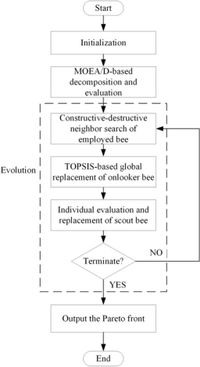The demand for energy-efficient manufacturing processes is rising as industries face mounting pressures from depleting natural resources. A recent study has introduced a novel algorithm aimed at addressing this pressing need through the variable speed hybrid flowshop scheduling problem (VSGHFSP), a complex challenge in production management.
The research focuses on the development of a constructive-destructive search-driven artificial bee colony algorithm (CDSABC), designed to minimize not only the makespan—the total time required to complete a set of jobs—but also the total energy consumption involved in the scheduling process. This innovative approach facilitates a more sustainable and effective manufacturing environment.
As modern technology evolves, energy consumption in manufacturing has increased dramatically, leading to urgent calls for sustainability. The new algorithm utilizes a speed optimization strategy for encoding and decoding job processes, which allows for a more accurate representation of real-world scenarios where machines often operate at variable speeds.
One noteworthy aspect of the CDSABC is its unique search-driven methodology. By integrating a constructive-destructive neighbor search strategy to improve solution quality, the algorithm assesses and optimizes job sequences and machine speeds. This iterative process enhances the overall scheduling performance while aiming to lower energy usage simultaneously.
"Aiming at this problem, a speed optimization strategy for encoding and decoding is proposed," wrote the authors. This advancement reflects a broader trend in manufacturing research, where efficiency and ecological considerations go hand-in-hand. In a series of comparative tests, the CDSABC algorithm was shown to deliver robust results when placed alongside other established methods in the field, including NSGAII, TMOA/D, MOEA/D, and MDABC.
Extensive experimental evaluations testify that the CDSABC outperforms other algorithms regarding the best, worst, average, and standard deviation of the inverse generation distance (IGD) index in 80% of the test cases. This metric indicates that CDSABC not only consistently produces superior solutions but also maintains diversity within its approach, thereby avoiding premature convergence on sub-optimal results.
The experimental framework consisted of 16 distinct VSGHFSP cases, categorized into eight large-scale instances with 100 jobs and eight small-scale instances with 20 jobs. This comprehensive testing illustrates the algorithm's adaptability across varying scales of operation within manufacturing contexts. The scenarios were calculated under controlled conditions, with setups that included varying machine processing times derived from a uniform distribution. The effectiveness of the CDSABC algorithm was quantified across several performance metrics, emphasizing its efficient handling of the complex scheduling tasks.
As the authors conclude, "The experimental results demonstrate that CDSABC is highly effective in addressing VSGHFSP." Such findings signify a pivotal step forward in manufacturing automation, particularly as industries increasingly turn to more sustainable practices.
For future work, the researchers aim to investigate further enhancements to the CDSABC algorithm, addressing areas such as initialization techniques for generating high-quality populations and simplifying the computational complexity associated with the TOPSIS method used in selection processes.
The results from this study herald not only significant advancements in algorithm-based scheduling management but also contribute meaningfully to the discourse surrounding energy efficiency. The optimal parameter settings for the algorithm were established as P = 150, N = 35, T = 20, paving the way for widespread implementation in real-world applications.
Overall, the innovative efforts demonstrated in the development of the CDSABC algorithm emphasize the fundamental shift towards energy-conscious manufacturing, building on existing frameworks while aspiring to achieve greater operational efficiency.




